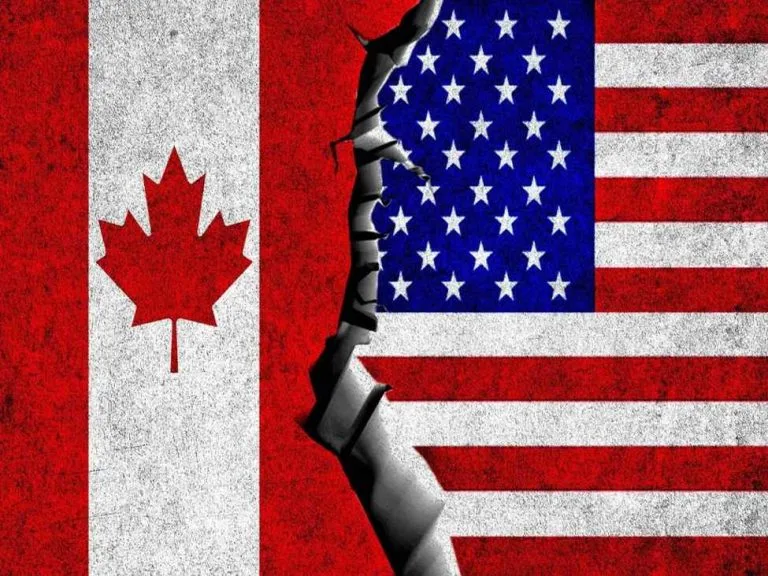Key Takeaways
- The USD/CAD pair saw a slight increase on Thursday, recovering from recent losses.
- Canadian economic data presented a mixed picture, alongside fluctuating oil prices influencing the currency.
- Anticipation is high for the upcoming US Consumer Price Index (CPI) data, expected to guide Federal Reserve policy.
- Geopolitical events, including US sanctions and trade talks, are contributing to market uncertainty.
USD/CAD Pair Edges Higher Amidst Mixed Signals
The Canadian Dollar (CAD) is showing resilience against the US Dollar (USD) on Thursday, with the USD/CAD pair experiencing a modest uptick. This recovery follows two consecutive days of losses, bringing the pair to trade near the 1.3994 level. The US Dollar is finding some support as traders evaluate mixed economic data releases from Canada and observe the volatility in oil prices, a crucial factor for the Canadian currency.
The US Dollar Index (DXY), which tracks the Greenback’s performance against a basket of major currencies, registered a slight decrease, trading around the significant 99.00 psychological mark. Earlier in the session, it had briefly reached a high of 99.14. The Dollar is regaining some momentum amid a cautious market sentiment and a rebound in US Treasury yields from recent lows. However, these gains remain subdued ahead of critical inflation data.
Canadian Economic Landscape and Oil Price Influence
In Canada, retail sales figures for August indicated a positive 1.0% month-over-month increase, largely driven by the automotive and general merchandise sectors. Sales volumes also mirrored this growth with a corresponding 1.0% rise. Despite this positive sign, an advance estimate from Statistics Canada suggests a potential 0.7% contraction in sales for September, indicating a nuanced economic picture.
Oil prices, a significant driver for the commodity-linked Canadian Dollar, have not provided substantial recent support. The West Texas Intermediate (WTI) crude benchmark is currently in its third consecutive day of recovery, with prices climbing over 3.5% to approximately $61.50 per barrel. This rebound follows a dip to near five-month lows earlier in the week. The upward price movement is largely attributed to supply concerns, notably following the US announcement of new sanctions targeting Russian energy giants Rosneft and Lukoil, which has amplified concerns about potential disruptions to global energy flows.
Recent developments in the oil market include Chinese state-owned oil majors suspending seaborne purchases of Russian crude, citing increased caution regarding potential Western sanctions. This action is fueling expectations of tighter market conditions in the short term. Concurrently, Kuwait’s Oil Minister has indicated expectations of rising oil prices in the aftermath of the US sanctions, noting a potential shift in demand towards the Gulf and the broader Middle East. He also conveyed that OPEC is prepared to address any supply shortfalls by adjusting output cutbacks if necessary.
US Economic Focus and Market Outlook
In the United States, market attention is largely focused on the ongoing US-China trade negotiations and the protracted government shutdown. Both factors are weighing on market sentiment and introducing uncertainty regarding the economic growth outlook.
The forthcoming US Consumer Price Index (CPI) report, scheduled for release on Friday, is highly anticipated. This data will be closely scrutinized for fresh insights into inflation trends and their potential implications for the Federal Reserve’s monetary policy stance. Market participants are already factoring in a quarter-point interest rate cut at the upcoming FOMC meeting on October 29-30.
US Dollar Price Today
The table below shows the percentage change of US Dollar (USD) against listed major currencies today. US Dollar was the strongest against the Japanese Yen.
| USD | EUR | GBP | JPY | CAD | AUD | NZD | CHF | |
|---|---|---|---|---|---|---|---|---|
| USD | 0.01% | 0.30% | 0.49% | 0.03% | -0.36% | -0.15% | -0.03% | |
| EUR | -0.01% | 0.29% | 0.50% | 0.02% | -0.37% | -0.16% | -0.03% | |
| GBP | -0.30% | -0.29% | 0.20% | -0.26% | -0.65% | -0.45% | -0.32% | |
| JPY | -0.49% | -0.50% | -0.20% | -0.48% | -0.85% | -0.66% | -0.52% | |
| CAD | -0.03% | -0.02% | 0.26% | 0.48% | -0.38% | -0.17% | -0.05% | |
| AUD | 0.36% | 0.37% | 0.65% | 0.85% | 0.38% | 0.21% | 0.37% | |
| NZD | 0.15% | 0.16% | 0.45% | 0.66% | 0.17% | -0.21% | 0.12% | |
| CHF | 0.03% | 0.03% | 0.32% | 0.52% | 0.05% | -0.37% | -0.12% |
The heat map shows a percentage change of major currencies against each other. The base currency is selected from the left column, and the quote currency is selected from the top row. For example, selecting the US Dollar from the left column and moving horizontally to the Japanese Yen displays the percentage change for USD (base)/JPY (quote).
Expert Summary
The USD/CAD pair experienced a slight upward movement on Thursday, influenced by a blend of mixed Canadian economic signals and volatile oil markets. While Canadian retail sales showed some resilience, forward estimates point to a contraction. Meanwhile, global oil prices saw a rebound, partly due to sanctions on Russian energy producers. Investors are keenly awaiting US inflation data, which could shape the Federal Reserve’s future policy decisions amidst ongoing trade uncertainties and shutdown concerns.

